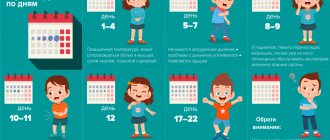Call now!
Dose determines both the poison and the medicine, and this rule applies to almost all types of herbs, medicinal plants and drugs. Originally used as a therapeutic agent, marijuana (cannabis) has become one of the most commonly used substances, gaining increasing popularity.
In Russia, marijuana, including medical marijuana, is classified as a narcotic substance and is prohibited by law. A person who uses medical marijuana for any purpose, or who is involved in its storage and sale, is subject to criminal liability on the territory of the Russian Federation. ATTENTION! The article is for informational purposes only and is not propaganda of narcotic substances.
Authors of the article:
1. Igumnov Sergey Aleksandrovich, doctor of medical sciences, professor, psychiatrist-narcologist.
2. Korensky Nikolay Valerievich, General Director of the Center for Mental Health and Anonymous Help Mypsyhealth - Mypsyhealth in Moscow, psychiatrist-narcologist.
REAL GOOGLE REVIEWS
REAL REVIEWS ON YANDEX SERVICES
REAL REVIEWS ON YANDEX MAPS
Data
· The use or possession of cannabis is prohibited in Russia.
· By far the most common way to take cannabis is to smoke it
· The substance in cannabis that causes the intoxicating effect is called delta-9-tetrahydrocannabinol, or THC for short.
· Cannabis addiction develops.
· Early treatment of cannabis addiction is quite effective.
What is cannabis
Hemp is an annual plant first found in Central Asia and later spread throughout the world. It contains the drug delta-9-tetrahydrocannabinol or THC, which belongs to the group of cannabinoids.
But cannabis was not always considered a drug. For example, its type of cannabis sativa contains a small amount of THC. Until the end of the 60s of the 20th century, this variety was grown in Russia. It was used to make clothing, ship rigging, oil and rope.
Now in Russia and a number of other countries, hemp is an illegal drug. And all this happened because of the so-called Indian hemp (cannabis indica), which contains a large amount of THC. From this type of plant they produce a huge amount of drugs, such as hashish, anasha, marijuana, hashish oil.
Harm, benefits and medicinal properties of medical marijuana
Call now!
Medical cannabis has potentially important ingredients for the treatment of various abnormalities, for example, based on all scientific experiments, there are two main active ingredients of the plant, namely delta-9-tetrahydrocannabinol (THC) and cannabidiol (CBD), which are called cannabinoids.
The cannabinoids, or active substances in medical marijuana, as opposed to the plant, are included in several medications approved in several countries for legal use and treatment of certain diseases. Despite the presence of more than a hundred different cannabinoids in cannabis, these two substances are leading in the fight against the symptoms of certain diseases.
THC is believed to be one of the main reasons for the widespread use and adoption of marijuana as it affects the mind, making users feel peaceful, calm, capable, relaxed, and so on.
An important feature is that our own body also produces various cannabinoids, which, according to some experts, on the one hand leads to the direct entry of these substances, and on the other, helps to increase the concentration of endogenous cannabinoids.
In the body, cannabinoids are involved in a number of processes such as concentration, memory, pleasure, control of appetite and pain, senses (taste, touch, smell, hearing) and many others.
The main effects of medical cannabis on the body include:
- changes in consciousness (in users it causes a feeling of euphoria, relaxation, happiness);
- sensory sensitivity (users experience changes in the perception of the environment due to increased hearing, taste, smell, vision);
- changes in heart rate and heart rate;
- increased appetite;
- dilated pupils, redness of the eyes;
- impaired coordination, balance and concentration;
- mental manifestations (possible anxiety, panic attacks, paranoia, hallucinations).
Effects are usually observed within minutes, most often between 10 and 30 minutes after use, and last up to three hours (variations are likely based on the form of medication used, dose and frequency of use).
The two main cannabinoids isolated from medical marijuana are used in a complex response to various symptoms of disease. For example, THC is an ingredient in several different drugs used to treat the nausea that often accompanies chemotherapy treatments for cancer patients.
The substance reduces nausea and vomiting, improves appetite, reduces pain and inflammation (as well as their external manifestations, such as swelling and redness), and also promotes muscle activity and control in musculoskeletal disorders.
Research in this area has even linked the substance to anticancer activity (kills certain types of cancer cells) and anticonvulsant activity (reduces seizures), but experiments have been conducted primarily on animal models, and more in-depth research is needed.
Studies in rodents have shown that the use of a highly purified medical cannabis extract can slow the growth of cancer cells in some of the most serious, aggressive and unfavorable brain tumors.
Experiments in mice have shown an increase in the activity of radiation therapy and radiation when coadministered with THC or CBD.
Numerous experiments are being conducted around the world to analyze, identify and test the effectiveness of cannabinoids contained in medical cannabis for the treatment of the following diseases:
- pain of various etiologies, which is the most common reason for taking marijuana, be it a severe headache or pain due to an underlying disease (glaucoma, tumors, nerve damage);
- diseases that seriously affect the immune system, such as HIV (Human Immunodeficiency Virus);
- multiple sclerosis;
- substance abuse;
- some mental and behavioral disorders such as schizophrenia, post-traumatic stress disorder;
- nausea and vomiting after chemotherapy;
- lack of appetite and severe weight loss (including cachexia) as a result of severe chronic illness;;
- eating disorders such as anorexia;
- glaucoma;
- convulsive diseases (convulsions).
Medical cannabis is available for use in a variety of forms, most commonly administered as syrup, tablets, smoking mixtures, but can also be included in some edibles (candy, cookies, etc.).
The choice of the most appropriate form of use is determined by the type of patient's disease, its severity, available limitations and complications, and the type of comprehensive treatment.
In some countries where medical cannabis is legal, substances containing cannabinoids (mainly THC) that are registered, legal and legal (available in online pharmacies) include dronabinol and nabilone.
They are used mainly in the complex treatment of nausea and anorexia (including cachexia) accompanying severe diseases of the body (for example, HIV), as well as after chemotherapy.
They are usually administered orally in the form of tablets and capsules, and the treatment regimen and duration are strictly controlled by the attending physician.
Common side effects that accompany these medications include headache, fatigue, drowsiness, dry mouth, low blood pressure (hypotension), dizziness, anxiety, and more.
Approved in several countries, the cannabinoid-based drug, primarily in the form of CBD, is used to treat some forms of childhood epilepsy and some congenital conditions.
Signs of cannabis addiction
A person is considered dependent on cannabis use if one or more of the following symptoms occur:
· Decreased mental abilities resulting in problems with work or study.
· Financial problems due to frequent purchases of “weed”.
· Irritability leading to conflicts with family and friends.
· Increased need for smoking cannabis.
· Sleep problems, mood swings without cannabis.
If a person exhibits the following symptoms, the couple should seek help from a specialist and get advice on drug addiction treatment.
Literature:
- Malko A.V. Anti-drug policy of modern Russia: dictionary-reference book / [ed.-comp. A. V. Malko, I. N. Konovalov, N. A. Frolova and others; edited by A. V. Malko, I. N. Konovalova]. — 2nd ed., revised. and additional — Moscow: Prospekt, 2021. — 351 p.
- Zakirova V. M. Drug addiction and drug policy: anti-drug educational programs in schools: monograph / V. M. Zakirova; Federal Agency for Education, State. higher educational institution prof. education Bashkir state univ. - Ufa: Bash State University, 2006. - 171 p.
- Grinspoon L. Marijuana: The Forbidden Drug / Lester Grinspoon, James B. Bakalar; [Transl. from English M.V. Krivenyuk]. — M.: Ultra. Culture, 2003 (Ekaterinburg: GIPP Ural.rabochy). — 427 p.
Is it legal to use cannabis?
In Russia it is prohibited to use, grow, store and distribute cannabis.
· Growing hemp of less than 20 bushes is subject to administrative liability in the form of a fine of 1.5 to 4 thousand rubles, or arrest for 15 days. If the number of bushes grown is more than 20, then this is punishable by up to 8 years in prison.
· use is punishable by a fine of up to 5 thousand rubles or arrest for 15 days.
· For possession of cannabis weighing more than 6 grams, a fine of up to 40 thousand rubles, correctional labor for up to two years or imprisonment for up to three years is imposed. If the weight of cannabis found is more than 100 grams, then they are imprisoned for up to 10 years. And if hemp is found in especially large quantities, the prison term increases to 15 years.
But distribution of cannabis is punishable only by imprisonment for a term of 4 to 20 years, depending on the amount of the drug found.
Ways to use cannabis
Typically, hemp is mixed with tobacco and the mixture is stuffed into cigarettes. Then they smoke it.
But besides this, there are special devices for smoking hemp. It's either a chillum or a bong.
A chillum is a straight hollow tube, usually made of glass, clay or metal.
A bong looks like a flask with two branches. Water is poured inside, tobacco or marijuana is placed in one branch, and smoked from the other branch.
Cannabis can also be added to food. Most often, muffins or cakes are prepared with it.
Some users add cannabis to milk, boil the mixture, and then drink it. In common people this drink was called “manyaga”.
Synthetic cannabis
Due to the prohibition of cannabis in many countries, smoking mixtures, or “spice” in other words, began to appear in 2004. This heavy synthetic drug was presented as an analogue of cannabis. But as it turns out, spice has terrible consequences. People who use it become extremely addicted and cause irreparable damage to their health.
With the advent of this drug, the number of suicides and fatal overdoses has increased. Spices are produced in the form of solutions. Absolutely any plant is moistened with it and then smoked.
The worst thing is that since 2004, the composition of “spice” has changed several times and continues to change.
Medical cannabis
It looks similar to regular marijuana. It is obtained from artificially bred varieties with a modified chemical composition, which contains cannabidiol, which is responsible for its medicinal effects, and tetrahydrocannabinol (THC), which has a stimulating effect. Cannabidiol (CBD) affects THC, reducing its narcotic effects, has calming properties, helps with pain and increased nervousness.
Medical varieties contain more cannabidiol than tetrahydrocannabinol, or the same ratio, so the stimulating effect is not very pronounced and no intense euphoria occurs. The doctor prescribes a certain variety based on the patient’s diagnosis. For example, for epilepsy, plants containing 1:1 THC and CBD are used, and for multiple sclerosis, with a minimal level of THC.
Medical marijuana has been proven to have the following properties:
- painkillers;
- anticonvulsant;
- antispastic;
- relieves nausea and vomiting in oncological pathologies.
It is believed that the plant can stop the growth of cancer and helps in the early stages of Parkinson's, Huntington's and Alzheimer's diseases. The results of clinical studies show that cannabinoids only alleviate symptoms, but do not affect the disease itself. Therefore, they are prescribed in combination with other medications when the patient is no longer helped by conventional treatment methods. Cannabis in medicine is not used as first-line therapy for any disease.
Effect after consuming marijuana
After smoking a marijuana cigarette, the effects of the drug begin within 10 to 60 minutes. Drug intoxication lasts about 2-4 hours.
A person who smokes experiences the following symptoms:
· Blood pressure rises, pulse increases.
· There is a feeling of euphoria and lightness.
· Increases appetite.
· Mood improves. He becomes sociable and cheerful.
But if the user drank alcohol before taking the drug, then the signs of drug intoxication intensify in the opposite direction. That is, the person becomes irritable, aggressive and dangerous to others.
Sources
- Faber R., Heling KS., Steiner H., Gembruch U. Doppler ultrasound in pregnancy - quality requirements of DEGUM and clinical application (part 2). // Ultraschall Med - 2021 - Vol - NNULL - p.; PMID:33906258
- Grauso L., de Falco B., Lucariello G., Capasso R., Lanzotti V. Diterpenes from Euphorbia myrsinites and Their Anti-inflammatory Property. // Planta Med - 2021 - Vol - NNULL - p.; PMID:33906246
- Lagrutta L., Sotelo CA., Estecho BR., Beorda WJ., Francos JL., González Montaner P. . // Medicina (B Aires) - 2021 - Vol81 - N2 - p.143-148; PMID:33906130
- Khoujah D., Cimino-Fiallos N. The geriatric emergency literature 2021: COVID and beyond. // Am J Emerg Med - 2021 - Vol44 - NNULL - p.177-183; PMID:33905980
- Stetter J., Boge G.S., Grönlund U., Bergström A. Risk factors for surgical site infection associated with clean surgical procedures in dogs. // Res Vet Sci - 2021 - Vol136 - NNULL - p.616-621; PMID:33905955
- Adusei KM., Ngo TB., Sadtler K. T Lymphocytes as Critical Mediators in Tissue Regeneration, Fibrosis, and the Foreign Body Response. // Acta Biomater - 2021 - Vol - NNULL - p.; PMID:33905946
- Hodge S., Greaves N., Murray D. The use of bovine pericardial patches in vascular surgery: where do we draw the line in obtaining informed consent? // Ann Vasc Surg - 2021 - Vol - NNULL - p.; PMID:33905843
- Yu J., Li W., Zhao L., Qiao Y., Yu J., Huang Q., Yang Y., Xiao X., Guo D. Quyu Shengxin capsule (QSC) inhibits Ang-II-induced abnormal proliferation of VSMCs by down-regulating TGF-β, VEGF, mTOR and JAK-STAT pathways. // J Ethnopharmacol - 2021 - Vol - NNULL - p.114112; PMID:33905820
- Buxbaum J., Qumseya B., Wani S. Toward an evidence-based approach for cholangitis diagnosis. // Gastrointest Endosc - 2021 - Vol - NNULL - p.; PMID:33905719
Psychological effects of cannabis
After repeated drug use, a person’s psyche comes under attack. At first, this is expressed only in increased irritability and decreased mood. But with systematic use of the drug, the following symptoms occur:
· The level of intellectual development decreases several times.
· Nervousness and irritability appear.
· Apathy develops, interest in life disappears. This leads to depression.
· Various paranoias develop.
· Panic attacks occur.
· Dependence develops.
But in addition to the detrimental effect on the psyche, serious harm is caused to the body.
Medicinal effects of cannabis
Medical varieties contain mainly cannabidiol, which is not psychoactive, but rather has a relaxing and analgesic effect. After consumption there is no feeling of confusion, as after regular “weed”, which contains more THC than CBD.
With severe pain and convulsions, active pathological foci form in the brain, which the body itself cannot cope with. Hemp preparations block the production of the neurotransmitter gamma-aminobutyric acid, excitation is not transmitted to higher nerve centers and gradually fades. At the beginning, reflexes associated with pain and fear are suppressed, and a general inhibitory effect, causing temporary disorders of memory and attention, appears only when the herb is abused. Side effects from natural cannabis occur less frequently than when taking synthetic analogues.
Cannabinoids can affect people in different ways . In cases of anxiety, they help to relax and calm down, and cause excitement in a healthy person. In addition, different varieties have completely opposite effects on the body. Some increase activity, others lead to drowsiness.
The effect of the drug on the body
A person who uses drugs daily is visible at first glance. He has a “glassy” look, slow, inhibited speech, he cannot focus his attention on any object or question, his face becomes “haggard.”
Then there are serious health problems:
· The cardiovascular system weakens. Namely, the condition of blood vessels worsens, which leads to poor circulation and low blood pressure. The risk of developing heart attacks and strokes increases.
· Possible development of bronchitis, asthma, lung and upper respiratory tract cancer.
· The nervous system ceases to function normally. This leads to psychosis, convulsions and constant trembling of the upper and lower extremities.
· In men, sperm quality is impaired, and in women, the menstrual cycle is disrupted. Possible development of infertility.
Contraindications and possible consequences
When using cannabis in medicine, you should be aware of its side effects and contraindications. With long-term use, various health problems may develop, such as:
- tumor diseases of the lungs;
- Chronical bronchitis;
- worsening cardiovascular pathologies;
- deterioration in concentration, memory, impaired thinking;
- decreased sperm count, menstrual irregularities and reproductive problems.
While taking cannabis, you should not drink alcoholic beverages as you may experience drowsiness, dizziness, and impaired coordination and judgment. It is not recommended to drive vehicles, work using machines or perform manipulations that require attention, concentration and correct assessment of the situation. Do not use medical marijuana during pregnancy and breastfeeding, or if there is a history of psychosis. The development of many side effects can be provoked by impurities of other substances if hemp of dubious origin and non-medical grade, with a high content of tetrahydrocannabinol, was used.
How harmful is marijuana?
Humanity has been using cannabis for centuries. And they took it not to get a “high”, but to treat various diseases.
Therefore, experts have come to the conclusion that during the first period of constant drug use there is no harm to the human body.
But with further systematic use, the detrimental effect will definitely be. For some it occurs faster, for others slower. This depends on the age of the user, his state of health, genetic factors, and the presence of chronic diseases.
Interestingly, cannabis produces a narcotic intoxication not only in the person who smokes, but also in those who are in the same room with him.
Pregnant women should absolutely not smoke weed. The drug will have an irreparable detrimental effect on the fetus. Typically, such women give birth to small children. In the future, they experience weakened intelligence, lags behind their peers, and serious health problems. It is even possible to develop various defects.
First stage
Intoxication is removed , that is, cannabinoids are removed from the human blood. This is done using droppers with various solutions prescribed by the doctor.
When intoxication is particularly pronounced and a person’s kidneys cannot cope with the elimination of toxins and stop “working,” then a hemodialysis session is performed, this is a procedure in which extrarenal removal of toxins occurs using a special device.
Or a plasmapheresis procedure is performed. During it, a person’s blood, using special equipment, is cleared of plasma contaminated with toxins and poured back into the body.
Second phase
With the help of medications, the body is brought out of the state of withdrawal syndrome and the functioning of the affected body systems is normalized. At this stage, hormonal drugs are most often prescribed.
Third stage
Working with a psychologist. Depending on the severity of drug addiction, the doctor works with the patient individually or prescribes group sessions. In especially severe cases, hypnosis sessions are performed.
No matter how it may seem that cannabis is not at all dangerous or harmful, in reality it turns out differently. This drug can destroy a person's life in an instant. In addition, with the advent of synthetic analogues, people who use drugs can lose the most important thing, namely their lives.
If a person or his relatives notice a drug addiction, they should immediately seek qualified help .
Helpful information
Find out:
- Synthetic cathinones : what kind of drug it is, how it affects the human body and what plants contain its analogue.
- How the psychotropic drug LSD and why, when overdosed, a person behaves inappropriately and can harm himself or others.
- Why are cocaine and crack illegal, and what is the effect of using these drugs?
- What is amphetamine and how quickly does its use cause addiction?
- How ecstasy and the dangers of using it in large quantities.
Content:
- Medical cannabis
- For what diseases is marijuana used?
- Contraindications and possible consequences
- Medicinal effects of cannabis
- Cannabis in medicine: methods of use
In some countries in Europe and North America, the use of cannabis for medicine is allowed. It is used as an antiemetic in cancer patients undergoing chemotherapy, and as an appetite stimulant for wasting syndrome caused by AIDS. In the UK it is used to treat muscle spasms in multiple sclerosis. From 2021 in Poland, it can officially be used to treat seriously ill patients. In Israel, the cultivation of medical cannabis is classified as an agricultural activity.










